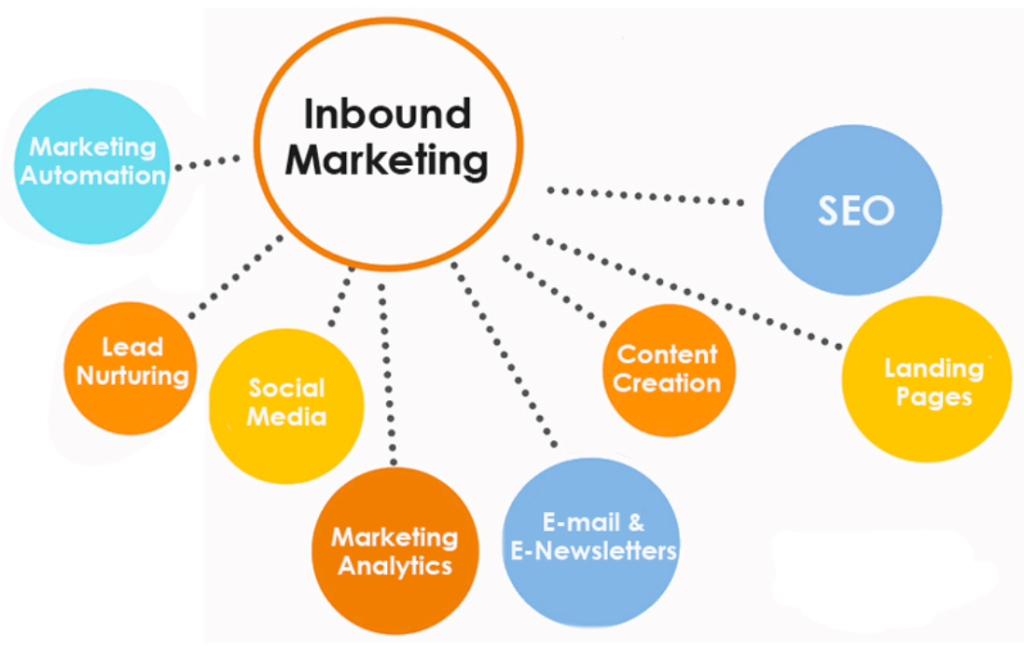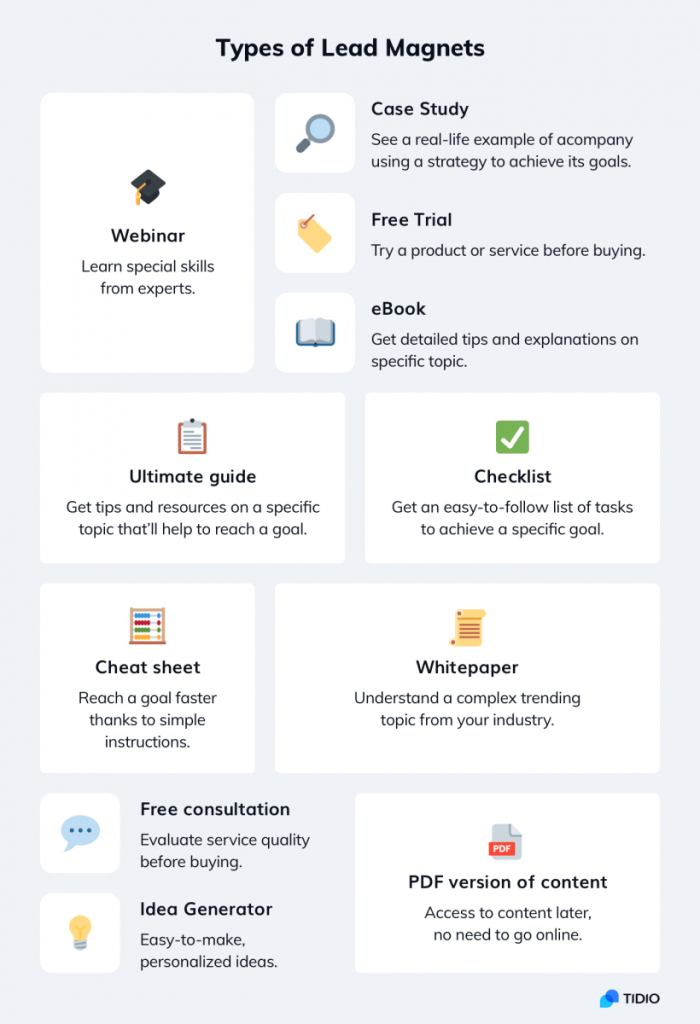10 Ways to Master Inbound Marketing and Grow Your Business
- What is inbound marketing?
- 10 Ways to Master Inbound Marketing
- Create a customer-centric website
- Leverage social media platforms
- Optimize for search engines
- Produce high-quality content
- Use email marketing to nurture leads
- Implement lead magnets
- Nurture leads with marketing automation
- Monitor and analyze your performance
- Continuously improve your strategy
- Stay agile and adaptable
- Conclusion
Inbound marketing is a powerful strategy for attracting new customers, building trust and increasing sales. Unlike traditional outbound marketing tactics, which rely on interruptive advertising and cold-calling, inbound marketing focuses on creating valuable content and experiences that are tailored to the needs and interests of your target audience.
Quick Links
In this article, we’ll explore some ways to master inbound marketing and take your business to the next level.
What is inbound marketing?
Inbound marketing is a marketing approach that focuses on attracting potential customers by creating valuable content and experiences tailored to their needs and interests. The goal of inbound marketing is to draw people towards your brand and products or services by providing them with useful information that they are searching for, rather than interrupting them with traditional advertising.
Examples of inbound marketing include:
- Blogging – creating blog posts that offer valuable information or insights to your target audience
- Search engine optimization (SEO) – optimizing your website’s content and structure to improve its visibility in search engines and attract organic traffic
- Social media marketing – engaging with your target audience on social media platforms by sharing relevant content, responding to comments, and building relationships
- Content marketing – creating various types of content such as ebooks, whitepapers, case studies, videos, or infographics that educate, entertain, or inform your audience
- Email marketing – sending personalized and relevant emails to your subscribers to nurture relationships and move them further along the buying journey
- Webinars – hosting online events that provide valuable information and insights on a specific topic and engage your target audience in a meaningful way

Source
All of these strategies aim to attract, engage, and delight potential customers by providing them with value and building trust with them over time, ultimately leading to increased brand awareness, website traffic, and sales.
10 Ways to Master Inbound Marketing
Create a customer-centric website
The first step in mastering inbound marketing is to create a customer-centric website. This means designing your website with your target audience in mind and making it easy for them to find the information they need.
Here are some tips for creating a customer-centric website:
- Conduct market research to understand the requirements and preferences of your target market.
- Create user personas to understand your target audience’s motivations and behaviors.
- Develop a website architecture that makes it easy for visitors to find what they’re looking for.
- Use clear and concise messaging that speaks directly to your target audience.
- Optimize your website for mobile devices, as more and more people are accessing the internet on their smartphones and tablets.
Leverage social media platforms
Social media platforms such as Facebook, Twitter, LinkedIn and Instagram can be powerful tools for attracting new customers and building relationships with existing ones. It may seem a lot of platforms but if your workspace is designed for productivity you can grow on all these platforms, simultaneously.
To master inbound marketing on social media, consider the following suggestions:
- Choose the platforms that are best for your company and your intended audience.
- Create a social media strategy that supports your overall marketing objectives.
- Create and share helpful content that appeals to your target audience.
- Engage with your followers by responding to comments and messages in a timely manner.
- Use social media advertising to expand your audience and boost your content.
Optimize for search engines
Search engine optimization (SEO) is the process of optimizing your website and content to rank higher in search engine results pages (SERPs). By mastering SEO, you can attract more organic traffic to your website and increase your visibility online.
Check out these tips for optimizing for search engines:
- Perform keyword research to learn the words and phrases your target audience is looking for.
- Produce keyword-optimized material of the best quality.
- Build high-quality backlinks to your website from other reliable websites.
- Optimize your website’s meta tags, URLs and other on-page elements.
- Keeping your website updated with fresh, relevant content on a regular basis.
Produce high-quality content
Content is at the heart of inbound marketing. By producing high-quality content that is valuable, informative, and engaging, you can attract new customers and build trust with existing ones.
Some recommendations for producing high-quality content include:
- Conduct research to understand your target audience’s needs and interests.
- Create a content plan that supports your larger marketing objectives.
- Create various content types, such as blog posts, infographics, videos and eBooks.
- Make your material more engaging by employing storytelling techniques.
Use email marketing to nurture leads
Email marketing is a powerful tool for nurturing leads and building relationships with your target audience. By sending targeted, personalized emails to your subscribers, you can keep them engaged with your brand and move them closer to a purchase.
Some tips for using email marketing to nurture leads include:
- Build a high-quality email list of subscribers who have opted in to receive your emails.
- Segment your email list based on subscriber interests and behaviors.
- Create targeted email campaigns that speak directly to your subscribers’ needs and interests.
- Use email automation to send personalized, timely emails to your subscribers.
- Track and analyze your email campaign performance to optimize your strategy over time.

Implement lead magnets
Lead magnets are valuable resources that you offer to your website visitors in exchange for their contact information. By implementing lead magnets, you can attract new leads and build your email list.
Here are some examples of lead magnets:
- eBooks and whitepapers
- Webinars and online courses
- Infographics and checklists
- Discount codes and special offers
- Free trials and demos
- To master inbound marketing with lead magnets, consider the following tips:
- Choose lead magnets that align with your target audience’s needs and interests
- Promote your lead magnets on your website and social media channels
- Use landing pages to capture visitor information and deliver your lead magnets
- Follow up with new leads in a timely and personalized manner

Nurture leads with marketing automation
Marketing automation tools can help you boost leads and build relationships with your target audience in a more efficient and scalable way. By automating repetitive tasks such as email campaigns and lead scoring, you can focus on more strategic activities such as creating high-quality content and analyzing your marketing performance.
Check out the following suggestions for using marketing automation to nurture leads:
- Choose a marketing automation platform that meets your business needs and budget.
- Create a lead nurturing workflow that aligns with your overall marketing goals.
- Personalize your email campaigns and other marketing messages based on lead behavior and interests.
- Track and analyze your marketing automation performance to optimize your strategy over time.
- If your product needs a call or meeting, you can use tools like Taggg to schedule meetings without the hassle of coordinating a time that suits all parties.
Monitor and analyze your performance
To grasp inbound marketing, it’s important to monitor and analyze your performance on a regular basis. By tracking key metrics such as website traffic, email open rates and conversion rates, you can identify areas for improvement and optimize your strategy over time.
Some tips for monitoring and analyzing your inbound marketing performance include:
- Set up analytics tools such as Google Analytics to track your website traffic and behavior.
- Create a dashboard that displays key metrics and performance indicators.
- Conduct A/B tests to optimize your website and email campaigns.
- Use data to inform your marketing decisions and strategy.
- Do weekly retrospective meetings to go over the numbers and share minutes of the meetings with attendees afterwards.
Continuously improve your strategy
Inbound marketing is an ongoing process that requires continuous improvement and optimization. By staying up-to-date with the latest trends and best practices, you can ensure that your strategy remains effective and relevant.
Here’s how you can constantly improve your inbound marketing strategy:
- Keep up with the latest practices and market trends.
- Test and experiment with new tactics and channels.
- Collaborate with your team and other marketing professionals to share ideas and insights.
- Be open to feedback and suggestions from your audience and customers.
Stay agile and adaptable
In today’s fast-paced digital landscape, it’s important to stay agile and adaptable. By being willing to pivot your strategy when necessary and respond to changes in your industry and audience, you can stay ahead of the curve and maintain a competitive edge.
We’ve listed some valuable tips for the same below:
- Keep an eye on your competition and market trends.
- Conduct regular audits of your strategy and performance.
- Be willing to try new things and take calculated risks.
- Staying open to feedback and adapting your strategy based on customer needs and preferences.
Conclusion
Mastering inbound marketing takes time and effort, but it’s well worth it. By creating valuable content and experiences that are tailored to your target audience, you can attract new customers, build trust and increase sales. By following these tips, you’ll be well on your way to mastering inbound marketing and taking your business to the next level.
Pro tip: Don’t try to implement all 10 tips at once. Start with a few and gradually build on your strategy. Remember to always keep your target audience in mind and stay true to your brand’s messaging and values.
Author bio:

Trevor is a SaaS growth consultant and co-founder of Taggg which helps schedule group meetings effortlessly by connecting calendars and overlaying availability. He leads product development and built Taggg to solve scheduling problems other software solutions have not solved particularly for active schedulers.
What Is WooCommerce Product Slider and Why Your Store Needs It
Why Do Product Images Matter So Much in Online Stores? When someone visits an online store the…
0 Comments9 Minutes
How to Streamline Your Customers’ Shopping Experience?
The goal for any online store is to make shopping as smooth as possible. When visitors move…
0 Comments8 Minutes
Strengthening Brand-Customer Relationships Through Gamified Loyalty Programs
Creating lasting connections with customers has become increasingly vital as the marketplace grows…
0 Comments6 Minutes
How to Use SEO and SEA Together in Search Engine Marketing
In digital marketing, search engine marketing (SEM) plays a critical role in improving online…
0 Comments10 Minutes
Content Marketing Growth Hacks: Real Shortcuts to Drive Traffic
Are you still lagging in content marketing? Sticking to these old strategies seems…
0 Comments10 Minutes
How to Build a Strong Local Following Using Social Media Marketing
In the days of likes, shares, and stories, local businesses have a golden opportunity to create…
0 Comments9 Minutes
Why WooCommerce is the Best Choice for Your Online Store?
WooCommerce stands out as a top option for anyone looking to build an online store. This platform…
0 Comments8 Minutes
How to Use AI-Powered SEO Tools for WordPress eCommerce
SEO is a critical factor in the success of any e-commerce WordPress store. As competition…
0 Comments11 Minutes








